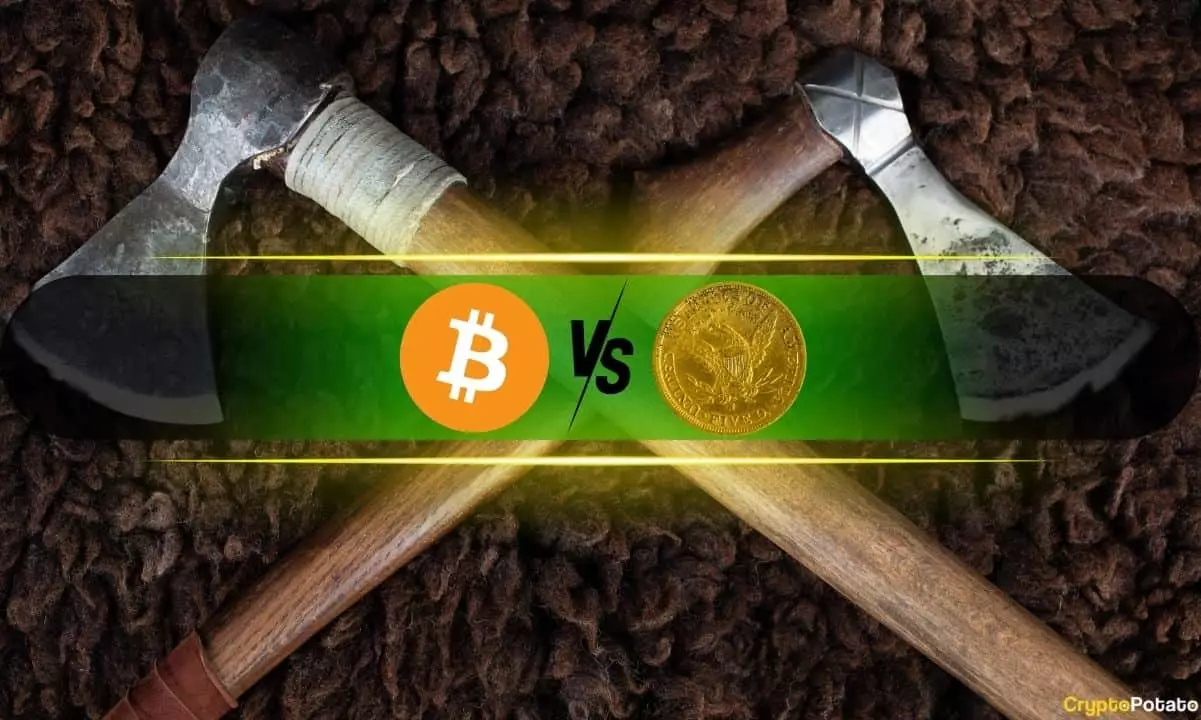In the realm of investment, few narratives are as compelling as that of Bitcoin and gold—a clash between the traditional and the modern. As we survey their price trajectories over the past six months, we observe a striking contrast. While gold has ascended relentlessly towards a potential milestone of $3,000 per ounce, Bitcoin has struggled to maintain its footing below the $100,000 threshold. This divergence presents a narrative ripe for exploration, uncovering the myriad factors influencing these assets’ fluctuating fortunes.
Gold’s recent surge can largely be attributed to heightened inflation and geopolitical uncertainty. This scenario is not dissimilar to the conditions experienced during the initial shock of the COVID-19 pandemic, wherein investors flocked to gold as a safe haven. The re-election of President Trump in January 2025 has ignited a fresh wave of uncertainty, further pushing investors toward this time-honored asset. The relentless rise of gold, boasting a market capitalization nearing $20 trillion, has left many financial experts reevaluating their long-standing skepticism towards the yellow metal, now heralded as a beacon of stability.
Several factors are fueling gold’s ascent. In a global economy grappling with rampant inflation, central banks have resumed their appetite for gold, reminiscent of pre-2020 patterns. The yellow metal’s allure is reinforced by historical precedent as a hedge against economic turbulence. Experts observe that as inflationary pressures rise, tangible assets like gold become increasingly attractive, compelling both institutional and retail investors to pivot towards this classical form of wealth storage.
Moreover, psychological components come into play here. The global economic climate is fraught with uncertainty, pushing investors to seek refuge in traditional assets. The recent accolades directed at gold are a stark contrast to the blockchain-based phenomenon of Bitcoin, which, despite its innovative underpinnings, is currently perceived as a high-volatility asset with uncertain prospects amidst the macroeconomic headwinds.
Bitcoin’s trajectory post-Trump’s inauguration starkly illustrates the volatility of cryptocurrencies. Following a remarkable upsurge immediately after the election, Bitcoin peaked at nearly $110,000, only to undergo a significant correction. Now hovering at around 15% beneath that all-time high, its recent performance raises critical questions about demand, particularly within the US market. Metrics like the Coinbase Premium, a barometer for demand, indicate a waning interest, which could herald further challenges for Bitcoin price momentum.
Yet, it would be premature to dismiss Bitcoin as a viable investment vehicle. The cryptocurrency market thrives on unpredictability and emotional responses, often defying traditional market logic. While the prevailing narrative suggests a protracted period of struggle for Bitcoin, the asset has shown an uncanny ability to rebound in unexpected ways, which could lead to a resurgence in the coming months.
Financial markets are notoriously irrational, characterized by sentiment-based swings that can rapidly alter asset valuations. This phenomenon is especially true in the cryptocurrency arena, where Bitcoin has historically baffled analysts with its erratic behavior. Some market watchers warn that the contrasting trends of Bitcoin and gold could signify a systemic shift, where declining confidence in cryptocurrencies might lead to further entrenchment of gold as the dominant asset. Conversely, should Bitcoin reestablish its foothold, it could initiate a rival narrative, disrupting the current economic paradigms.
Ultimately, the relationship between Bitcoin and gold is multifaceted, influenced by macroeconomic policies, investor sentiment, and market psychology. As the world contends with evolving economic conditions, both assets will likely continue to vie for investor attention, albeit on decidedly divergent paths.
The ongoing tension between Bitcoin and gold invites investors to navigate a complex landscape of opportunities and risks. As Bitcoin’s trajectory remains unpredictable and gold’s status as a safe haven solidifies, the future of these two assets will inevitably shape market dynamics in 2025 and beyond. For now, the question persists: will Bitcoin rise from the ashes, or will gold continue to dominate the financial strategy of a wary investor base? Only time will unravel the story woven into the interactions of these two powerful financial assets.

